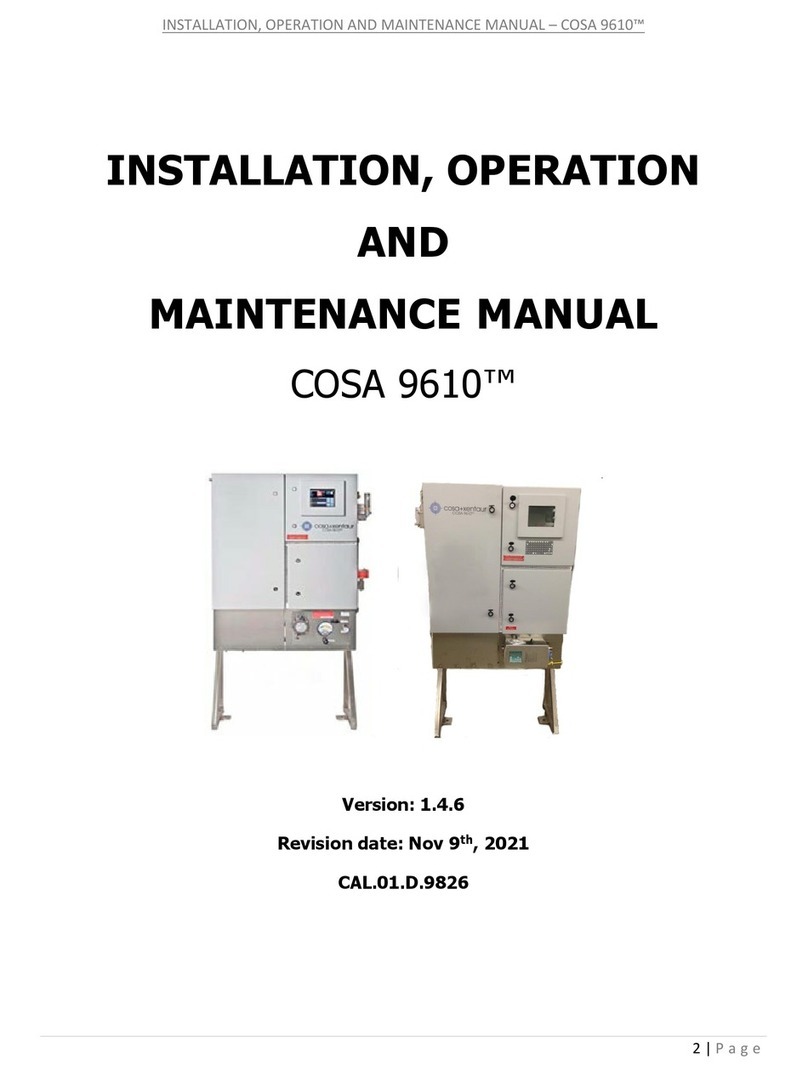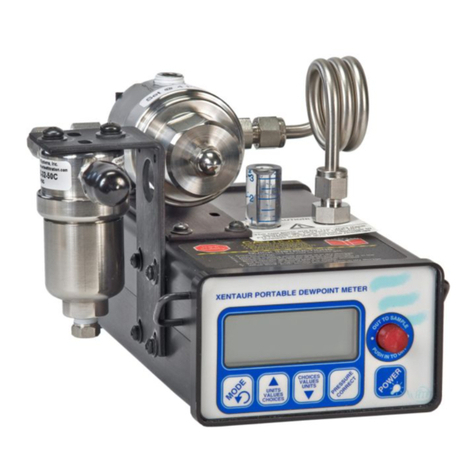
INSTALLATION, OPERATION AND MAINTENANCE MANUAL – COSA
9610™
Table of Contents
1. INTRODUCTION
.................................................................
5
1.1.
I
NTRODUCTION
................................................................................
5
1.1.1. Purpose of the
anal
yzer..........................................................................5
1.2. THE COSA 9610™ ANALYZER
............................................................
5
1.2.1. Oven with oxygen sensor........................................................................6
1.2.2. The sample system
(SCS)
.......................................................................7
1.3. CALIBRATION
P
ROCEDURE
.................................................................
8
1.4. EXTENDED (DUAL) RANGE
O
PTION
....................................................
10
1.4.1. Operation ...........................................................................................10
1.5. SPECIFICATIONS COSA 9610™ WOBBE INDEX ANALYZER ....................... 11
1.5.1. Analyzer performance..........................................................................11
1.5.2.
Utilities.................................................................................................
..11
1.5.3. Installation..........................................................................................11
1.6 X-Purge option…………………………………………………………………… 12
2.
INSTALLATION.................................................................
16
2.1. GENERAL
...................................................................................
16
2.2. STORAGE
...................................................................................
16
2.3. PLACEMENT
................................................................................
16
2.3.1. Ge
n
era
l.................................................................................................
16
2.3.2. COSA 9610™ in general purpose execution (Type 01 &
02)
.................... 17
2.3.3. COSA 9610™ in explosion proof execution (Type 01-Ex &
02-Ex)
.............17
2.4. MECHANICAL CONNECTIONS
..............................................................
18
2.4.1. Ge
n
era
l.................................................................................................
..18
2.4.2. Sample supply......................................................................................19
2.4.3. Calibration gasses ................................................................................19
2.5. ELECTRICAL CONNECTIONS..............................................................20
2.5.1. COSA 9610™ in general purpose execution............................................20
2.5.2. COSA 9610™ in explosion proof execut
ion
.............................................20
3. IN
OPERATION.................................................................
21
3.1. START-UP SAMPLE CONDITIONING SYSTEM
..........................................
21
3.1.1. Inspection, visual and external connections ...........................................21
3.1.2. Air orifice se
l
ect
ion
...............................................................................21
3.1.3. Opening of shut-off v
al
ves
.....................................................................
22
3.1.4. Setting of gas pressure reducer.............................................................22
3.1.5. Adjusting flow with flow meters ............................................................22
3.1.6. Adjusting booster relays
........................................................................
22





























